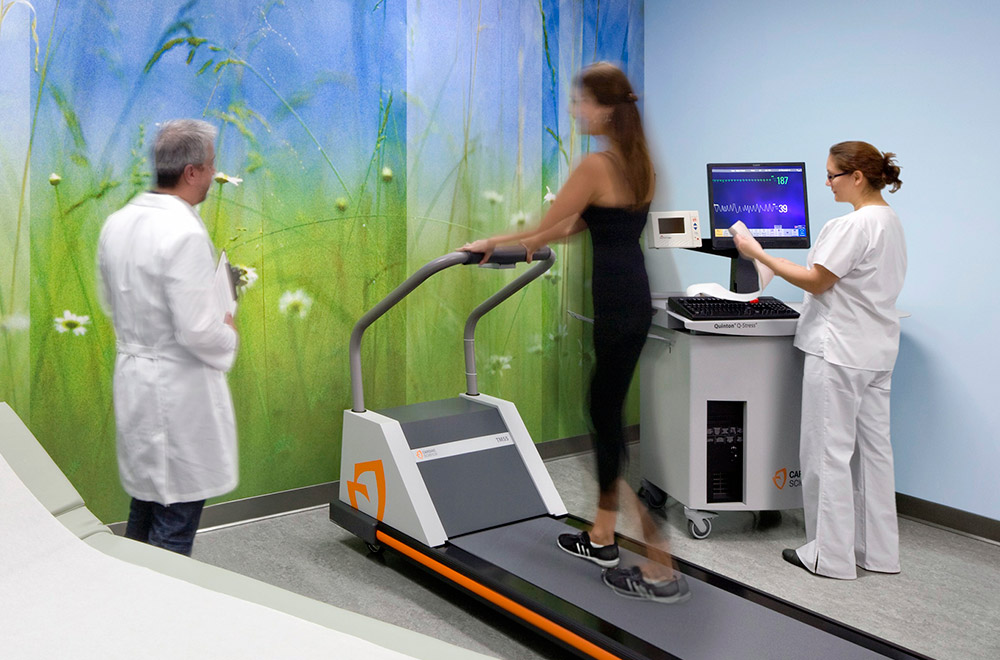Patient-centered design strives to foster a full spectrum of positive and uplifting psychological responses, and connecting patients with nature is key to achieving this end. In the recent white paper “Design and the Bottom Line,” Rebecca Hathaway and Kimberly Nelson Montague offer examples from Mid-Columbia Medical Center and Sharp Coronado Hospital about how they blurred the threshold between nature and healing. Inspired by Planetree principles, they integrated patients with nature via views, artwork, landscape, and water features and created opportunities for patients (and staff) to be outdoors.
This incorporation of nature in the healing environment is prevalent at Mid-Columbia Medical Center in The Dalles, Ore. The 10-year-old Celilo Center, which specializes in oncology, features a Center for Mindfulness with lounge chairs overlooking a healing garden. A water feature mimics the nearby Celilo Falls—a primary gathering and healing site for Native Americans for ten thousand years. Numerous artworks reference the healing power of water, and many large windows overlook a labyrinth garden, where walking meditation or sitting in the garden are available.
A number of Mid-Columbia’s departments, including physical, occupational, and speech therapy and a sleep center, are housed at the new Water’s Edge: a health and wellness center completed in June 2010 in which Mid-Columbia is a one-third partner. Proximate to the Columbia River, the building itself is fairly simple and focused on the outside; looking out the window from water therapy, a patient is likely to see geese and other birds. Art in the facility, including green glass pieces that blur the line between interior and exterior, reflect the character of the Pacific Northwest and are placed throughout. A balcony offers fresh air and connection to the outdoors, and the overall vibe is more reflective of hospitality than of medicine.
This connection with nature can also have a large impact on staff members. Marcia Hall, CEO of California’s Sharp Coronado Hospital has a particularly vivid memory of Sharp’s outdoor labyrinth, a circular meditative path. She recalls a time when a new nurse had lost her first patient, and was taken by a friend into the labyrinth to cope with the impact of that experience. Hall is convinced that providing opportunities to use breaks in a meaningful way, such as walking the labyrinth, has contributed to the hospital’s continued improvements in both patient and staff satisfaction.
Additionally, the therapeutic effects of views to nature and the calming effects of certain artworks have been repeatedly documented and implemented in healthcare facilities, leading to that ultimate in bottom-line savings: reduced average stays per patient1.
In “The Use and Impact of Evidence Based Design” published November 2010 by Ellen Taylor, AIA, MBA, EDAC, contends that the integration of patient-centered care strategies is on the rise. She reports:
62.9% of healthcare projects incorporated healing environment concepts
32.8% used gardens as design features and,
39.3% used art with nature scenes.
To learn more about how nature-inspired design in healthcare facilities is contributing to positive patient outcomes, download the full whitepaper.
1 Stone, S. “A Retrospective Evaluation of the Planetree Patient-Centered Model of Care Program’s Impact on Inpatient Quality Outcomes. Hahn School of Nursing and Health Science, University of San Diego, CA, 2007.
